Invisalign – Farmington Hills, MI
An Invisible Answer for Twisted Teeth
Invisalign has swiftly gained popularity over the past few decades as an exciting new alternative to traditional orthodontics. Introduced in the late 1990s, this transparent solution has helped millions of patients gradually shift their teeth into their ideal positions without the hassle and embarrassment that’s often associated with metal braces. If you’re interested in Invisalign, schedule a consultation today with Radiant Dental in Farmington Hills.

Why Choose Radiant Dental for Invisalign?
- Digital Imaging & Impressions for Accurate Results
- Preferred Invisalign Providers
- In-House Dental Membership Plan to Help with Expenses
How Invisalign Works
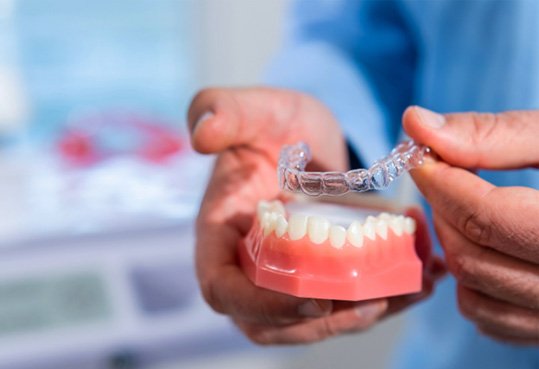
Invisalign relies on clear aligners placed over your teeth to gently apply enough force to transition them to their ideal placements throughout your treatment. Made from FDA-approved transparent plastic, these trays are customized to the unique positions and bite patterns of your teeth. They use strategically calculated pressure points to rearrange overcrowded, gapped, and crooked teeth into a perfectly even smile. You will wear them for 22 hours daily, then in 1 to 2 weeks, your dentist will provide a new set to account for the ongoing movement throughout treatment.
Who Can Invisalign Help?

Invisalign is a modern orthodontic solution that can deliver impressive and long-lasting results. While traditional braces may be the better treatment for those with more severe misalignments, Invisalign can discreetly and comfortably shift the teeth of many patients into straighter, healthier, and more beautiful positions. Here are a few of the problems this wonderfully inconspicuous treatment can address.
Crowded Teeth
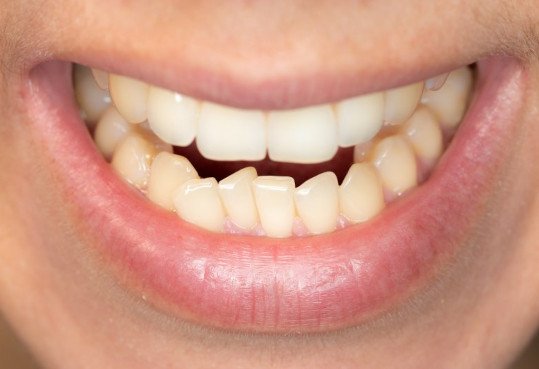
If your teeth are pressed too closely together, it can be difficult to brush and floss them efficiently, increasing the likelihood of infections like tooth decay or gum disease as well as dental injuries. Patients may also have difficulty chewing or jaw pain. By shifting teeth so they line up properly, Invisalign can make brushing and flossing easier and relieve the discomfort caused by crowding.
Gaps Between Teeth
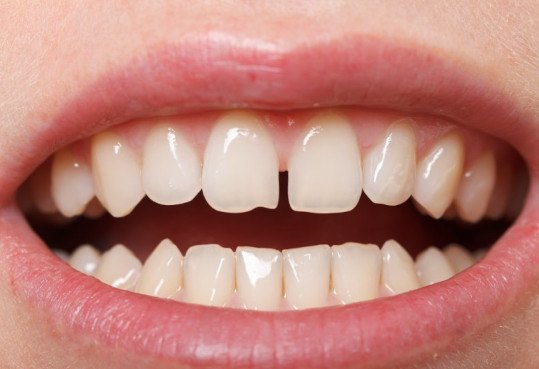
Large spaces between your teeth can impact your appearance as well as your oral health. Gaps can make you self-conscious about your uneven grin while allowing larger bits of food to injure your soft oral tissues. Food stuck between teeth can also cause bad breath as well as cavities. Closing these gaps can leave you with a healthier and more comfortable smile.
Overbite
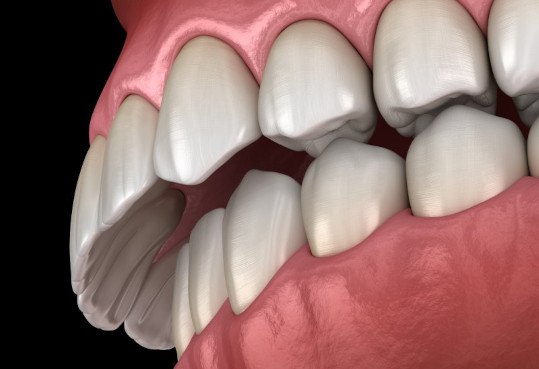
An overbite is a condition in which the top teeth protrude too far over the lower teeth, leading to issues like jaw pain, difficulty speaking, uneven dental wear, and problems with closing and opening the mouth. This issue can also leave the top teeth more vulnerable to injury and infection.
Underbite
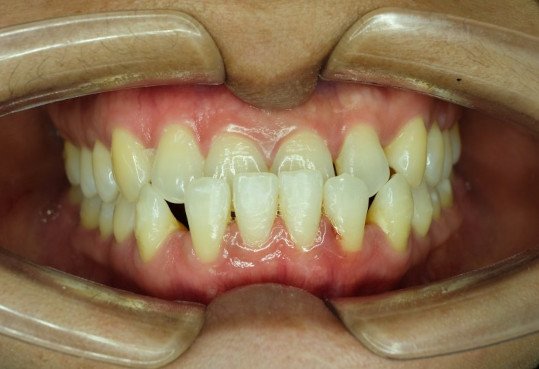
The bottom teeth of a patient with an underbite sit in front of or evenly with the top teeth when the mouth is closed. This problem can result from genetics, oral trauma, or prolonged childhood habits like thumb-sucking. An unaddressed underbite can lead to an increased risk of sleep apnea, difficulty speaking and chewing, and mouth breathing. While underbites are easier to treat if the patient is younger, it’s still important to address this issue in older adults. Treating an underbite with Invisalign typically involves using rubber bands or other attachments to allow the trays to properly reposition the lower teeth.
Crossbite
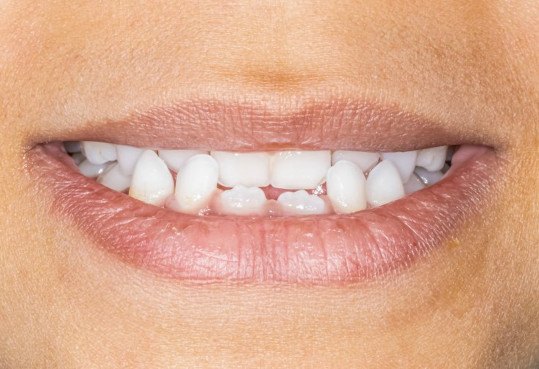
Crossbites happen when the bottom teeth are slightly in front of the upper teeth, which usually results from genetics, bad oral habits, or the baby teeth being lost prematurely. While Invisalign can usually address this issue, doing so may involve using elastics or other accessories to reposition the jaw. An unaddressed crossbite can lead to long-term consequences such as a greater likelihood of gum disease and tooth decay, jaw pain, headaches, speech difficulties, bruxism, facial asymmetry, and diminished self-confidence.
Open Bite
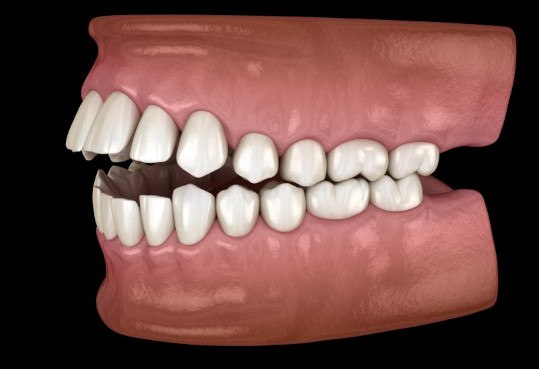
Teeth with an open bite will not overlap or touch when the mouth is closed. This condition often results from poor bone development or prolonged thumb or pacifier sucking during childhood, and it can make it more difficult to pronounce certain words and sounds. This can also increase the amount of wear on the back teeth, making them more vulnerable to injury and infection. Invisalign can address an open bite and prevent enamel erosion by closing the gap between the top and bottom teeth.
Benefits of Invisalign
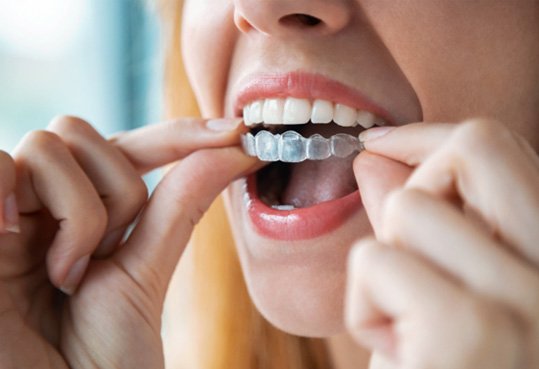
With so many people choosing Invisalign each year, you might be wondering if you should do the same. Ultimately, this is a decision that you will need to make with our Farmington Hills dental team. Until then, you can read on to learn a few of the many perks of this innovative orthodontic treatment!
Increased Self-Esteem

It’s no secret that traditional braces are a bit of an eyesore. In fact, many patients go to great lengths to cover their smile during their orthodontic treatment for that very reason. Fortunately, Invisalign aligners are made of clear plastic and, as a result, are far less noticeable. So, you won’t have to wait until the end of your teeth-straightening journey to smile confidently!
Note: If you decide to remove your aligners for a special occasion, like school pictures or a presentation at work, make sure you put them back on ASAP so you don’t fall off-track with your treatment plan.
Quicker Average Treatment Timeline
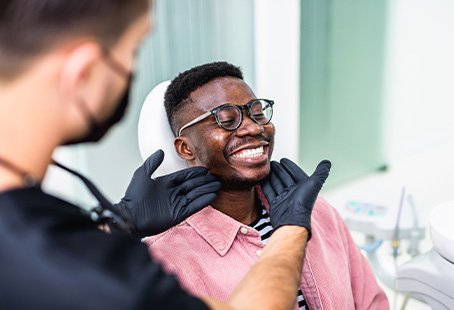
Generally, treatment plans with Invisalign are anywhere from 12-18 months. That said, there are several factors that will impact whether that’s the case for you, including your age, if any preliminary treatments are needed, and how severe your case is. If you’re interested in getting an estimate of your teeth-straightening journey, then take the next step: schedule a consultation!
Fewer Dietary Restrictions

With traditional braces, patients need to avoid popcorn, tortilla chips, almonds, and other crunchy foods. With Invisalign, there aren’t any permanently installed brackets. So, there are no dietary restrictions to contend with! Simply remove the aligners for meals and reinsert them when you’re done.
Reminder: The development of a cavity will bring your teeth-straightening journey to a temporary stop. So, make sure that you don’t go overboard with sugary and starchy foods. Instead, stick to a well-balanced diet filled with lots of nutrient-dense, smile-friendly meals.
Hassle-Free Oral Hygiene

Another perk of having removable aligners is that you can take them out before brushing and flossing your teeth. In other words, you don’t have to adopt a cumbersome oral hygiene regimen or buy special products, like interproximal toothbrushes, in order to clean your teeth.
Tip: To reduce your risk of cavities, brush your teeth after each meal and snack. That way, food particles, plaque, and other debris don’t get trapped against your teeth by your aligners.
Metal-Free Aligners
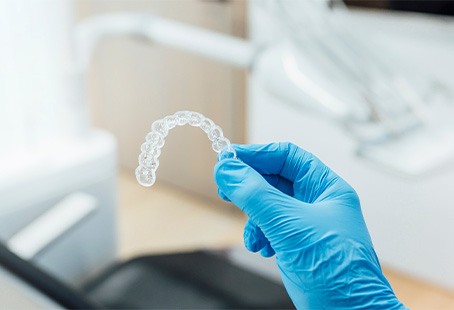
Having metal-free braces certainly comes with its aesthetic advantages. It also makes the teeth-straightening process considerably more comfortable since there aren’t any protruding brackets or wires. Plus, Invisalign aligners are custom-made to fit the contours of your mouth, which prevents soft tissue irritation as well.
Living with Invisalign Aligners

At your initial appointment, our Farmington Hills dental team will show you how to take care of your aligners and provide some helpful tips on navigating life with braces. If you need a refresher (or you’re still in the process of researching Invisalign), then this next section is for you! In it, you’ll find information on everything from wearing your aligners to what to do if you accidentally lose one.
Wearing Your Trays
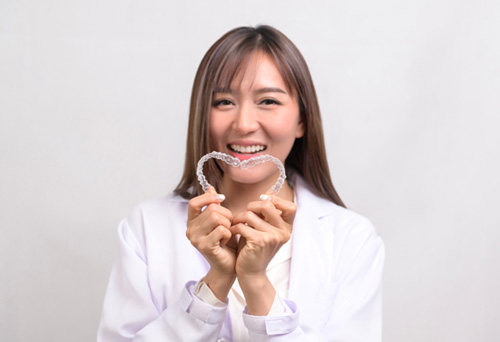
Naturally, your aligners won’t work if you don’t wear them. For that reason, patients are asked to wear theirs for at least 20 hours a day. If you aren’t sure if you’re meeting the mark, then use the stopwatch on your phone as a guide! Also, make sure you only take your trays out when you have to, like before eating, and not just randomly throughout the day, like when your teeth feel a bit sore.
Cleaning Your Aligners
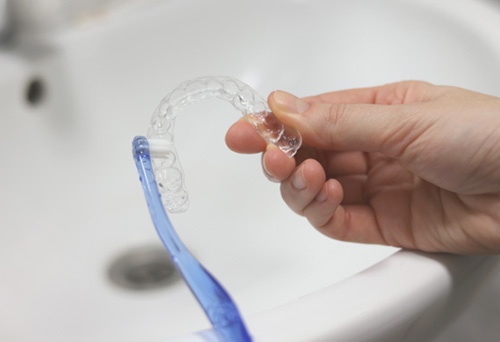
Good news: keeping your aligners clean doesn’t require special oral hygiene products or a cumbersome routine. All you need to do is rinse your trays with clean, cool water when you take them out, and clean them before you put them back on. To accomplish the latter, use a soft-bristled toothbrush, cool water, and clear, mild dishwashing liquid. You can use a dentist-recommended clear aligner cleaner too!
Eating & Drinking

With traditional braces, navigating mealtimes can be a bit tricky because there are so many dietary restrictions. With Invisalign, it’s much easier because the aligners are removable, so you don’t need to worry about orthodontic emergencies as much. We simply recommend sticking to foods and drinks that are smile-friendly as much as possible, like fresh fruits, cooked vegetables, lean proteins, and water.
Damaging a Tray

If you notice a small, hairline crack starting to form, it’s crucial that you exercise caution with your aligners. If it gets larger or breaks into multiple pieces, then contact us ASAP. Depending on where you are in the treatment process, we may recommend wearing your previous set while a replacement is made. If you’re close to progressing to the next set, then we may have you move forward instead.
Routine Check-Ins

Although there aren’t as many check-in visits with Invisalign, each one is important. So, make them a priority! During these appointments, we take new scans and compare them to your treatment plan, allowing us to monitor your progress. If one or more of your teeth aren’t moving as expected, then we can make the necessary adjustments and help you get back on track.
Understanding the Cost of Invisalign

Understanding the costs involved with Invisalign treatment is vital for planning your budget. However, the overall price of your case can vary depending on several factors, so there’s no way to know exactly what you’ll need until after your consultation. At Radiant Dental, we’re committed to helping you achieve your ideal smile at an affordable price. Read more below to see how we determine the cost of your treatment and the options we offer to save you money.
Factors that Affect the Cost of Invisalign
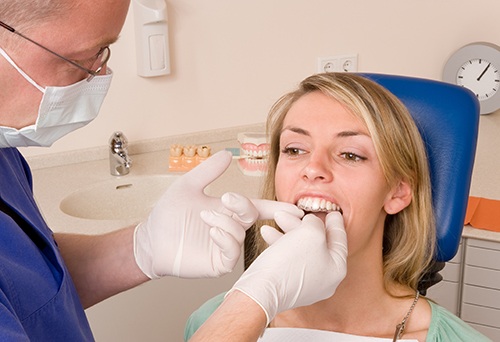
There are several factors our team examines to find the total cost of your Invisalign treatment, including:
- Complexity of Treatment: More severe misalignment or bite issues may require more aligners, leading to higher costs.
- Treatment Length: The longer the treatment, the more aligners and checkups are needed, affecting the overall price.
- Additional Procedures: In some cases, other treatments, like tooth extractions or attachments may be needed, incurring additional costs.
Without a consultation with Dr. Saywa, it’s next to impossible to give you a direct quote. That’s part of the reason why an initial visit is so important to understanding the cost of your treatment.
Invisalign vs. Mail-In Aligners: Which Costs More?
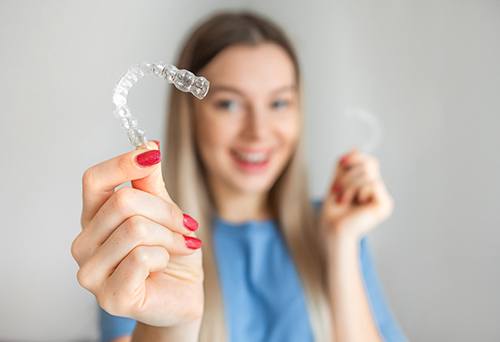
When comparing Invisalign to mail-in aligners, there are some clear differences in both cost and quality. While mail-in aligners may seem generally less expensive upfront, there’s a reason for that! Companies that sell mail-in clear aligners don’t include in-person consultations and very rarely provide professional oversight.
By contrast, Invisalign offers several advantages, such as:
- Customized Care: Invisalign treatment is monitored by our highly trained dental team, ensuring adjustments are made as needed for excellent results.
- More Complex Cases: Invisalign can treat more advanced dental issues that mail-in aligners can’t, including significant misalignments and bite problems.
- Faster, Reliable Results: Mail-in aligners aren't well-customized, so their effectiveness is limited. All too often, patients come to see us when their mail–in aligners cause costly errors in their smile.
So, while Invisalign may cost more upfront than generic at-home alternatives, it's well worth it. Our professional clear aligners have proven effectiveness and offer a level of care the competition can’t match.
Does Dental Insurance Cover Invisalign?
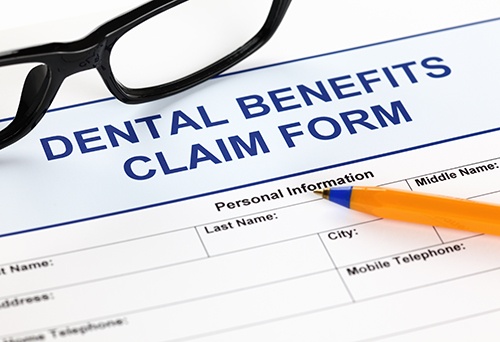
If your provider offers orthodontic benefits, your dental insurance may cover a portion of your Invisalign treatment. However, coverage can vary depending on your provider and specific policy. If you’re unsure where to find the information you need, or if you’re too overwhelmed, our team can help! We’ll work with you to navigate your insurance information to confirm how much of your treatment should be covered before you start.
Options for Making Invisalign Affordable

At Radiant Dental, we offer several options to make Invisalign more affordable for our patients. So, if you don’t have dental insurance, there may still be a solution that fits for you!
- In-House Membership Plan: Patients enrolled in our membership plan receive discounts on many dental treatments, including Invisalign, making it easier to manage the cost of care.
- CareCredit Financing: With CareCredit, you can split the cost of your Invisalign treatment into smaller, more manageable payments, allowing you to stay on budget without compromise.
By offering flexible payment plans and financial support, we’re here to ensure a straighter smile is accessible to every patient. If you’re ready to begin your smile transformation, schedule your Invisalign consultation and take the first step to a straightened smile today!
Invisalign FAQs
Who is Not Eligible for Invisalign?
There are a few cases where a patient may not be eligible for Invisalign – at least initially. One example is if their case of malocclusion is severe. This requires traditional braces (or a mix of traditional braces and Invisalign) to address. Another example is if tooth decay, gum disease, or another oral health problem is present. In that case, your treatment plan will begin with the necessary restorative care so that your teeth and gums are healthy again.
How Long Does Invisalign Take?
The average Invisalign treatment timeline is 12-18 months. With that said, yours could be shorter, longer, or fit precisely in the timeframe. Two of the biggest factors in the length of your teeth-straightening journey are the complexity of your case and how well you abide by the guidelines we provide, like wearing your aligners for 20-22 hours a day. With all of that said, we will provide you with an estimate at your initial consultation so you have a general idea of how much time you need to invest in clear aligner treatment.
Does Invisalign Hurt?
This is one of the most asked questions about Invisalign. The answer is, “No, Invisalign does not hurt.” This is largely due to the fact that the aligners are custom-made from smooth materials and there aren’t any brackets and wires. Of course, you can expect to feel some soreness, particularly in the hours following your transition to a new set of aligners since that’s when your teeth are moving the most. When that happens, try sipping on cold water, avoiding crunchy foods, and taking OTC pain medication (as directed) to alleviate your discomfort.
Can You Eat with Invisalign?
There’s really only one rule when it comes to eating and Invisalign: you have to take your aligners out before every meal and snack. If you don’t, then they can break or warp, making them useless.
It’s also important that we mention – as your dental team – the importance of eating well-balanced, nutrient-dense meals. This will help keep your teeth and gums healthy, preventing unwanted delays in the process.
How Do I Clean My Invisalign?
The first step of keeping your Invisalign aligners clean is rinsing them thoroughly with clean, cool water each time you take them out. The second is placing them in their designated case when you aren’t wearing them so they don’t discolor or become a breeding ground for bacteria. The third is using a soft-bristled toothbrush and clean, cool water to gently wash them after each meal. The fourth and final step is using the cleaning crystals that came in your welcome kit on an as-needed basis.

